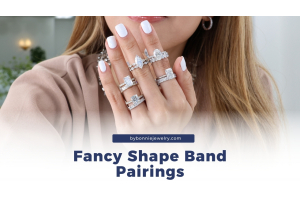Diamond Shape Comparison
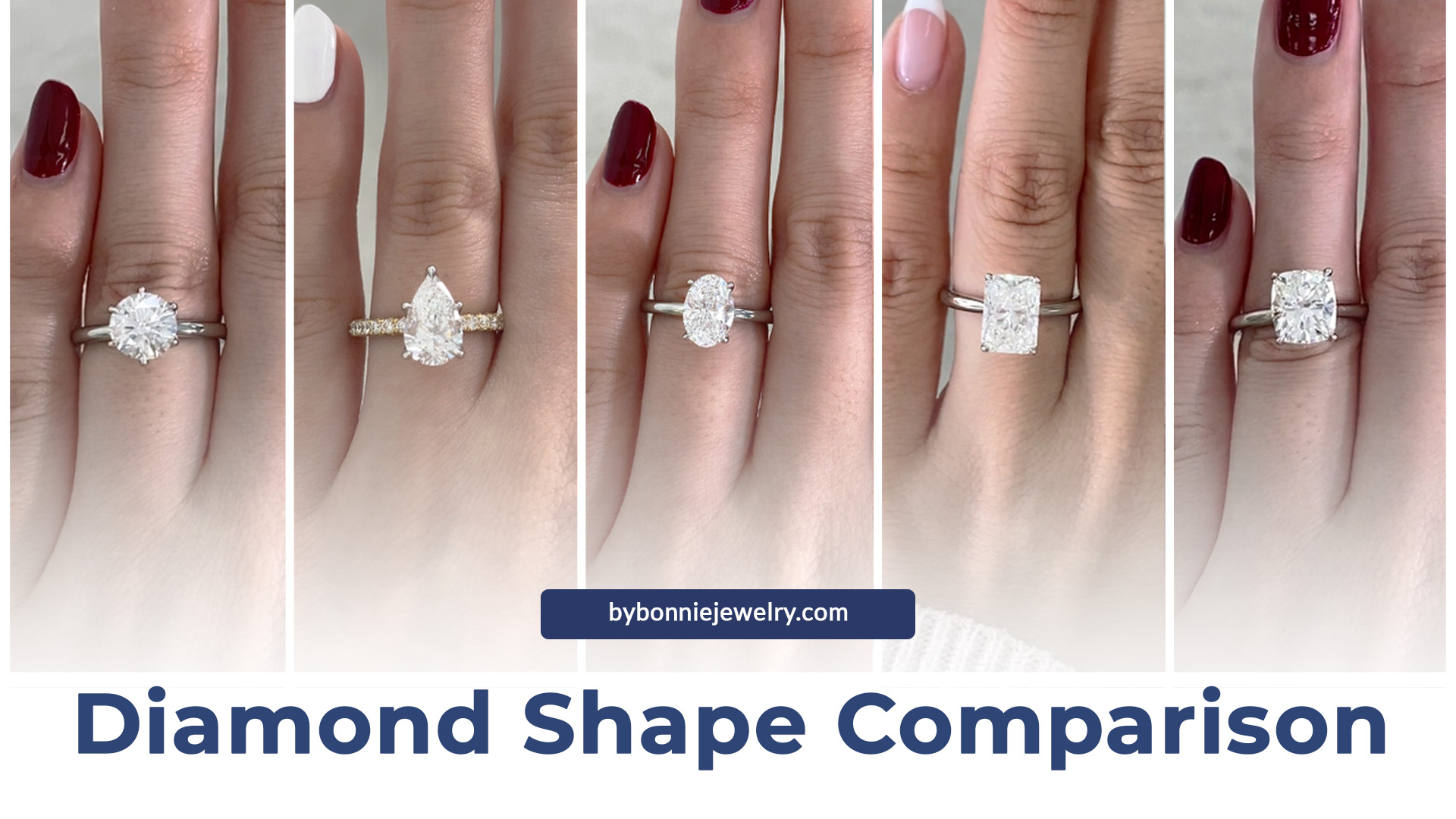
Hello, everyone! Welcome back to our By Bonnie blog, where we talk about all things diamonds! Today, we have an exciting blog in store for you. We'll be comparing various diamond shapes, with a special focus on our beloved tulip collection. Dive into the nitty-gritty details of color and clarity, and explore smaller carat weights. It's a blog you won't want to miss!
Round Vs. Oval-Cut Comparison
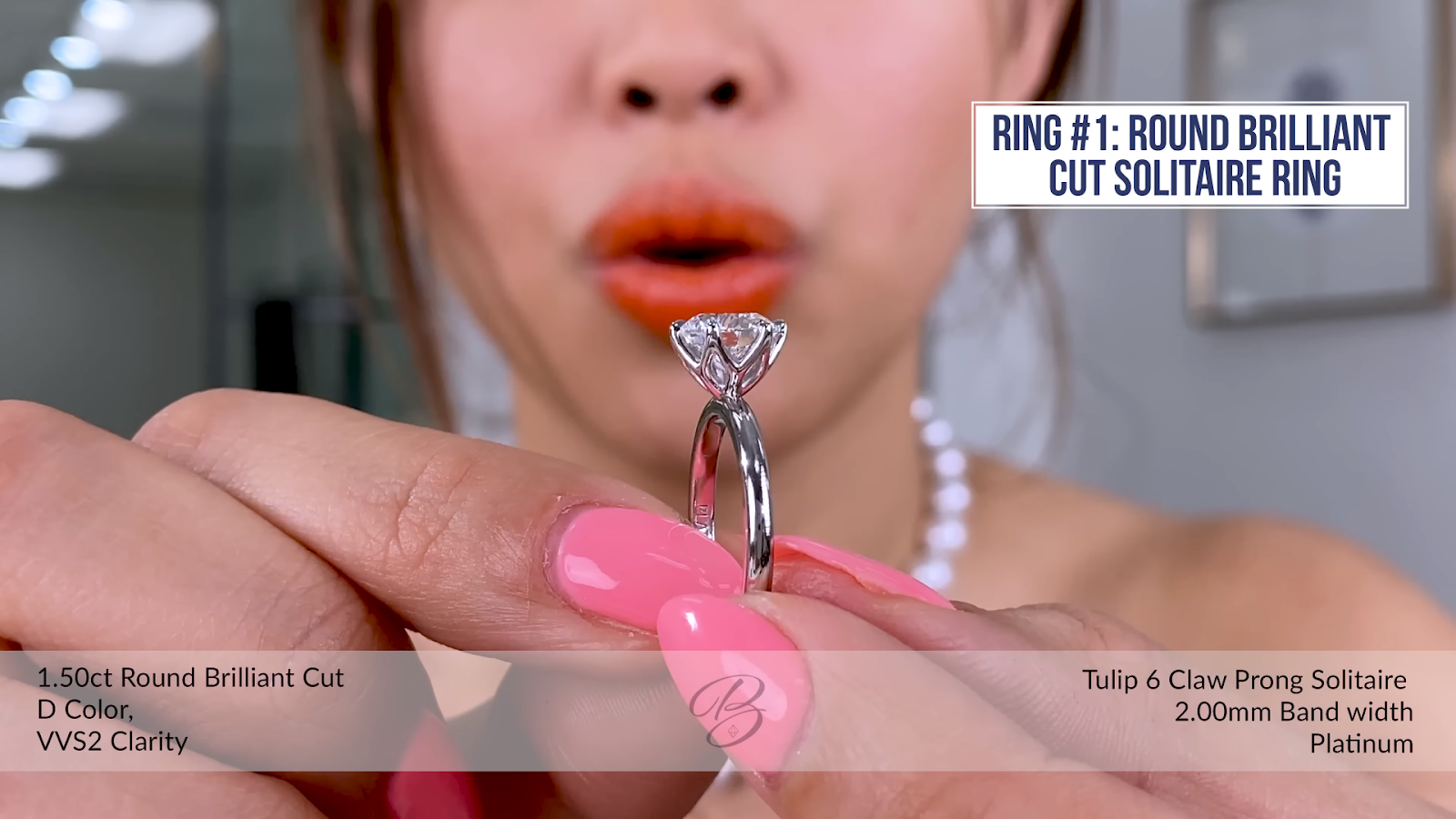

The first piece we're showcasing today is a classic round diamond set in a beautiful tulip setting. It's a 1.5ct diamond on a 2mm band. If you prefer a more subtle and less conspicuous look, this size is ideal. Now, let's compare this to our tulip setting for ovals, starting off with our 1.3ct oval diamond.


A lot of you have actually sent me DMs asking if you can do peekaboo gemstones. But first, what do I mean by peekaboo?
Well, it's when you have a little surprise hidden gemstone underneath your main diamond. Peek-a-boo diamonds, also known as hidden diamonds, are any diamonds that are hidden from direct sight on the ring. They are designed to sit flush with the ring so that they cannot be seen directly and may not be noticeable at all unless someone specifically points it out.
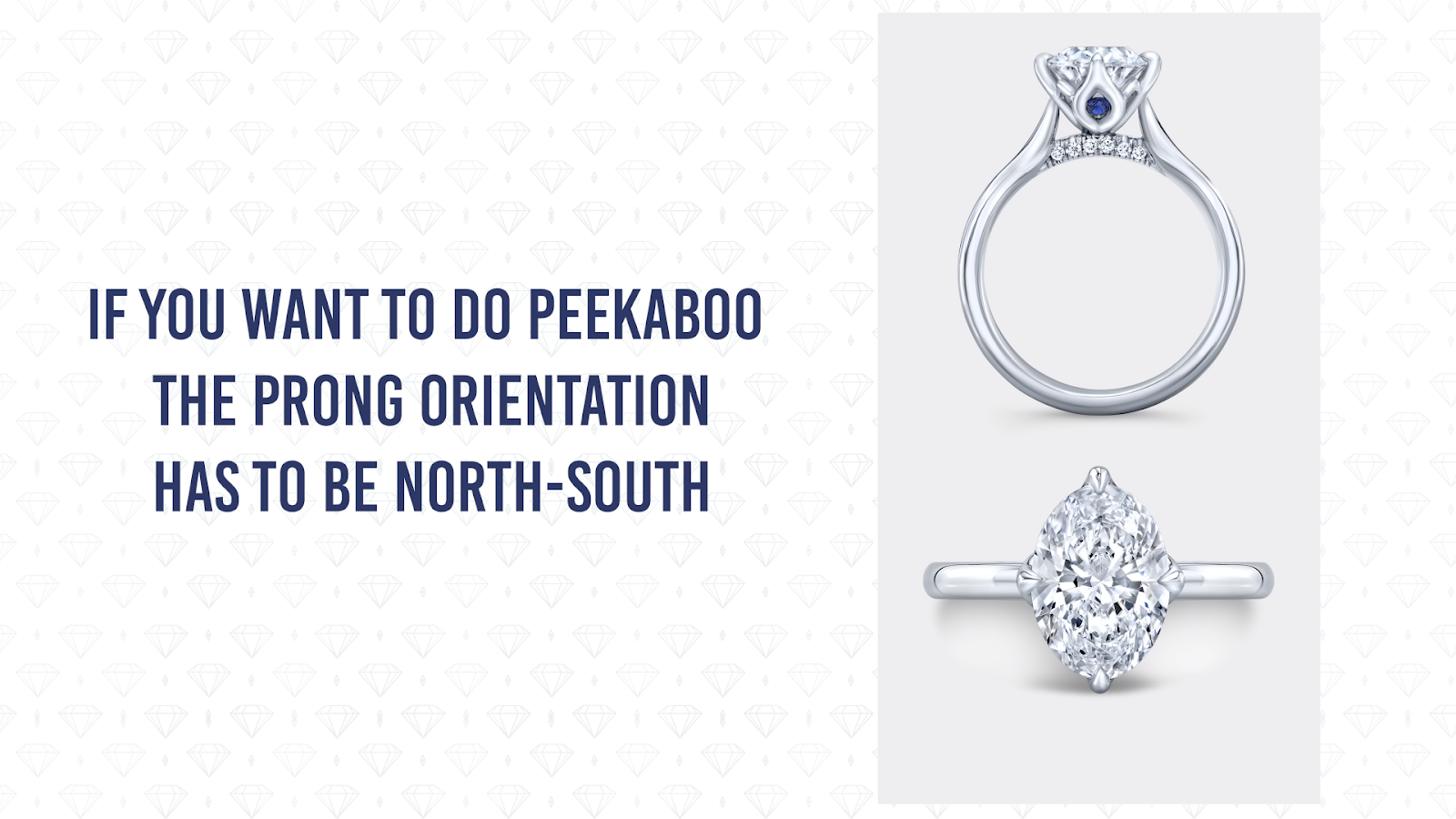

A peekaboo diamond is an elegant way to add additional class to a piece without making the ring appear overly flashy or ostentatious. They can also add additional brilliance to the piece by creating another angle from which it will sparkle, even if the diamond itself is not immediately visible in such a situation.
So, if you're considering this delightful peekaboo style, just remember that the prongs for the oval should be oriented north-south. This ensures that your peekaboo gem perfectly complements the main diamond, creating a stunning visual effect.
Let's compare the 1.5ct round with the 1.3ct oval. You'll notice that the oval provides more finger coverage, even though it has a slightly smaller carat weight.
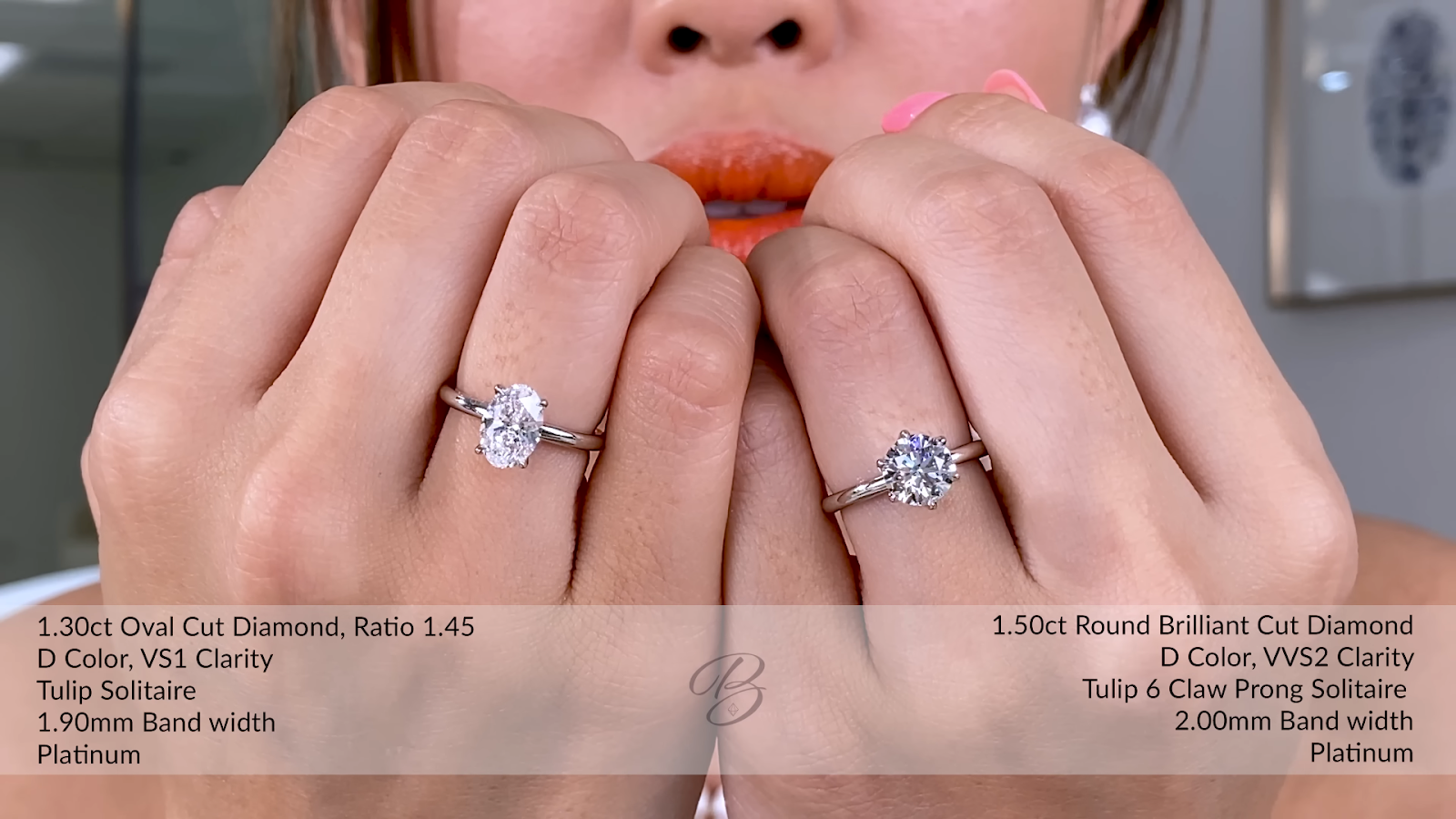

The diamond's ratio also plays a significant role in its appearance. If you're torn between choosing a round or oval shape, you're not alone. Both are classic choices. It's worth mentioning that ovals tend to be a bit shallower than rounds because they're essentially elongated rounds, this helps you measure what suits your hand shape and style preference best.
Oval Diamond Vs Pear Shape Diamond Comparison


Let's take a closer look at number three in our lineup, the pear-shaped tulip setting. This addition is relatively new to our collection, as I'm very meticulous when it comes to introducing new designs. They need to be carefully crafted to meet our high standards.
In the past, we've showcased a tulip setting with a three-carat pear-shaped solitaire. However, the one I'm presenting today is a more subtle 1.5ct version, catering to those of you who requested a shape comparison with smaller carat weights. Both rings that we’ll be showing here have thick bands, about 2.2 mm. If you know me, then you know that I often recommend going a bit thicker because it will offer more long-term support for your precious gem.
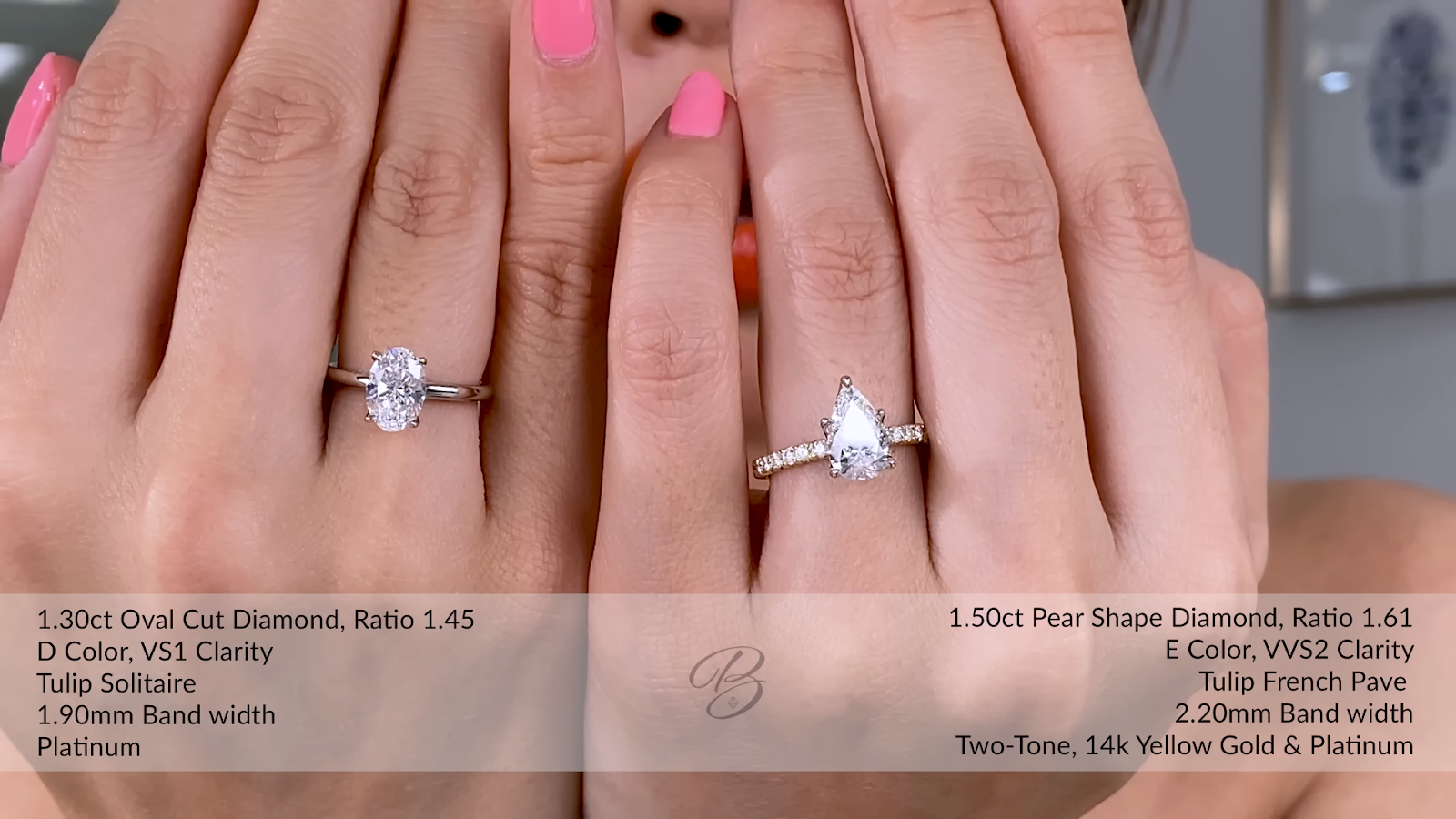

On one hand, we have the 1.3ct oval, and on the other, the 1.5ct pear shape. Take a look, and you'll notice our signature French pavé detailing in a captivating two-tone style. This technique truly makes the center stone stand out.
Let me provide some insight into pavé. It's all about your personal preference and lifestyle. Some love the extra shimmer and elegance it brings, while others prefer a sleeker, minimalist look. There's no definitive right or wrong choice here, just what suits you best.
Choose Pavé If:
- You adore brilliant, all-around sparkles.
- You seek an elegant, delicate look.
- You want your ring to exude luxury.
- You appreciate versatility in design.
- Attention-grabbing is your style.
Avoid Pavé If:
- You lead an active, hands-on lifestyle.
- Budget is a significant concern.
- Easy cleaning and a larger range of resizing are priorities.
In a nutshell, pavé settings are a dazzling choice if you love extra shimmer and sophistication, but they may not suit everyone's lifestyle or budget!
Cushion Cut Diamond Vs. Radiant Cut Diamond Comparison
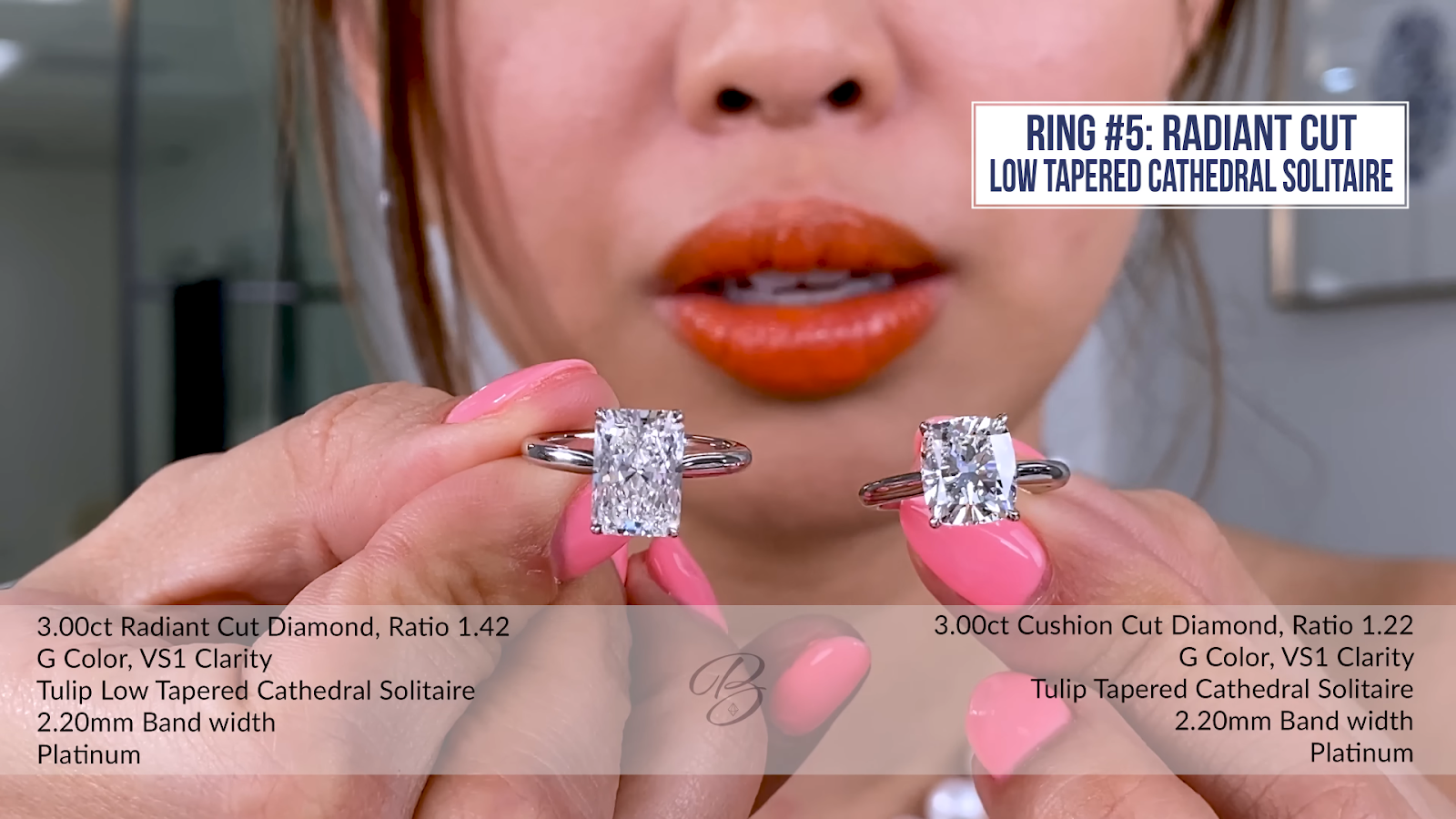

Finally, let's delve into ring number four. It's a slightly elongated cushion shape with a beautiful three-carat center stone. And right next to this beautiful ring, we have ring number five, featuring an elongated radiant shape. It's more rectangular with sharp corners, distinct from the rounder, more pillowy cushion shape. The subtle detail to note here is the tapering on the band. In one version, there's a slight gap, creating a floating effect, while the other version has no gap, offering a more connected look. Both styles are equally loved by our clients.
Going back to the discussion of ratios, remember that the ratio is calculated as length divided by width, it’s a crucial factor when choosing your diamond shape.


Longer fingers may favor elongated shapes, while a cushion shape suits those with a balance of width and length. Radiant, on the other hand, offers clean lines and a squared-off look.
Both these beauties feature our signature tulip design, adding a unique touch. They come in various options, including two-tone and single-tone, and boast a classic 2.2mm band width, offering ample support for stones in the 2.5 to 3-carat range.
We're also showing you a small but significant detail – cathedral vs. non-cathedral settings.
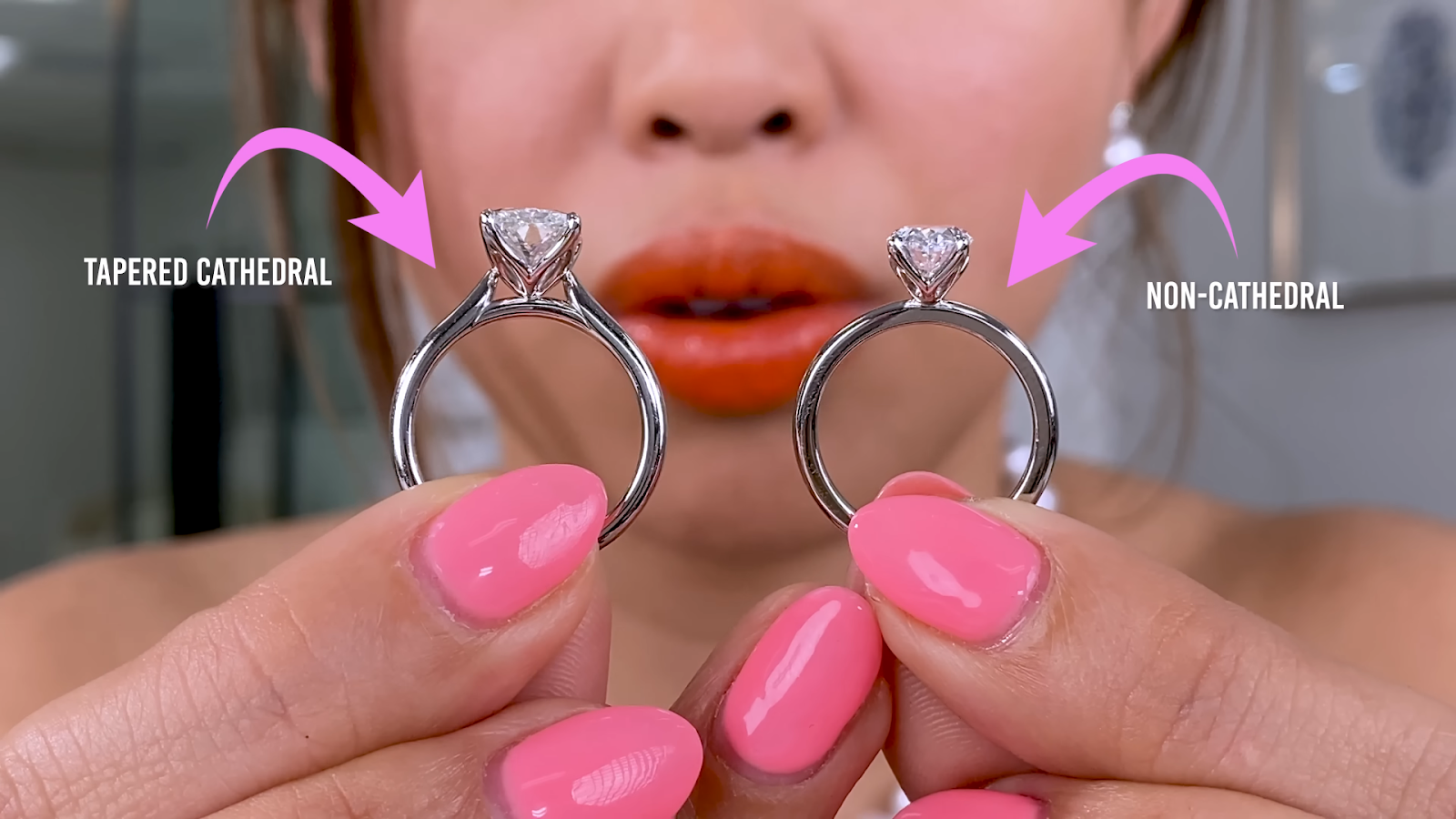

We prefer to taper them to make the stone appear larger from the top view. So here's the view of both, non-cathedral and tapered cathedral, showcasing our exquisite tulip design.
These details might seem minor, but they make all the difference when you're choosing the perfect ring for your unique style and hand shape.
Bonnie’s Tips!
Here's a pro tip for all you ring shoppers out there. When you're on the hunt and don't have access to every single shape in a physical jewelry store, consider the wonders of Amazon. It's a treasure trove of options where you can order various shapes and try them on in the comfort of your home. After all, choosing the perfect ring can take time, and preferences can change.
But if you're ever in doubt, you can't go wrong with a classic. Round and oval shapes are undeniably timeless, suited to grace your finger for years to come. For more information on these beautiful ring shapes and a stunning collection to explore, visit By Bonnie's website. And don't forget to check out Bonnie's YouTube channel (especially the video for this blog!) for in-depth videos on ring shapes and much more. Your dream ring could be just a click away!




